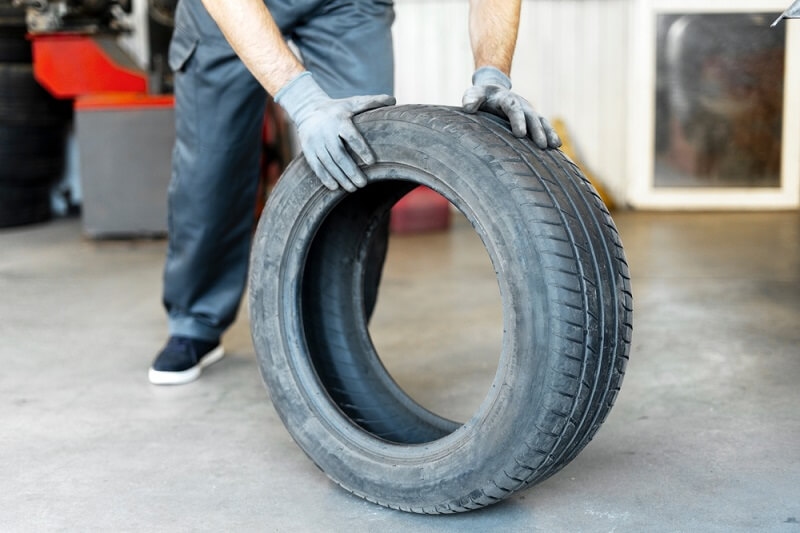
Let’s be honest—your garage floor probably wasn’t your top concern when it came to vehicle care. But if you’re noticing early signs of wear or uneven tread on your tyres, the floor under your car might be the silent culprit. Yep, garage floor damaging tyres is a real issue—especially if you’re parking on untreated concrete. The fix isn’t just about looks. It’s about tyre health, performance, and long-term savings.
This guide walks you through what’s causing garage floor tyre damage, and how simple changes—like the right garage floor coating—can flip the script and extend the life of your tyres.
A concrete slab might seem harmless, but it’s not tyre-friendly. Here’s why:
Bare concrete absorbs and holds onto moisture. During rainy seasons or humid weather, that moisture rises and meets your tyres. Over time, it seeps into the rubber and starts to degrade it from the inside out. The result? Cracks, brittleness, and early failure. That’s concrete garage floor tyre wear in action.
Garages collect all the wrong stuff—oil drips, road salt, brake fluid, cleaners, and fuel stains. When your tyres sit in that cocktail, the rubber starts breaking down. It’s slow, it’s quiet, and it’s expensive when it hits.
Concrete’s rough. Even minor movement—parking, turning the wheels while stationary—rubs off bits of rubber. Over time, that friction leads to flat spots and uneven tread. That’s not just annoying—it’s unsafe.
So yes, garage floor tyre damage is a thing, and it starts from the ground up.
Don’t Miss: 20 Must-Have Items for Your Car Emergency Kit in 2025
Want to stop tyre wear in its tracks? Don’t change your tyres—change your floor. The right garage floor coating shields your tyres from moisture, chemicals, and friction. And if done right, it even boosts your garage’s overall value.
Good coatings like epoxy or polyurethane seal off concrete’s pores. No more water soaking in. No more tyre rot from the bottom up.
Quality coatings resist oil, antifreeze, brake fluid, and whatever else drips under your car. That means your tyres aren’t bathing in corrosive junk anymore.
Epoxy leaves a smoother surface than raw concrete. That cuts down the abrasion that causes tyre scuffing and tread wear. Less rubbing = longer-lasting rubber.
Tyres aren’t cheap. Protecting them with a one-time coating is smarter than replacing them every couple of years.
So yes, the garage floor coating benefits go way beyond looks.

Ever heard of hot-tire pickup? It’s what happens when warm tyres—straight off the road—pull up the garage coating when parked. It’s annoying and ruins the finish. And it happens when:
The fix? Use epoxy floor tyre protection that’s rated to handle heat. Always prep your floor (diamond grinding is best), follow application directions, and wait a few days before parking. Rush it, and your tyres will literally tear the floor up.
Not all coatings are created equal. Here’s what to look for if your goal is tyre protection:
Avoid garage “paints” from the hardware store. You want industrial-grade 2-part epoxy. Or better yet, polyaspartic—it cures faster, handles heat better, and doesn’t yellow in sunlight.
Make sure your chosen coating creates a true barrier. Moisture coming up from the slab is what starts tyre rot in the first place.
Your coating should laugh in the face of oil stains and jack stands. If it scratches or stains easily, it’s not built for garage duty.
Forget ultra-gloss if it means slippery. Look for slip-resistant additives that offer traction without grinding down your tyres.
Once you’ve got the right coating in place, the next move is preventing stains and tyre marks on your garage floor.
Even a perfect epoxy job can get tyre streaks if you don’t take a few simple steps:
If your coating says wait 72 hours before driving on it, wait 72 hours. Early parking is the biggest reason tyre marks appear.
Sounds obvious, but dirty tyres drag in oils and tar. That transfers to the floor. Quick clean = fewer streaks.
Still paranoid? Park your vehicle on rubber mats or tyre savers. They’re cheap insurance, especially if you’re storing a car long term.
Dust and grit = more friction. A quick sweep now and then keeps everything smooth and reduces the risk of garage floor tyre damage.
Thinking about doing it yourself? Here’s the reality:
If you’re coating the floor purely to prevent garage floor damaging tyres, the DIY route can work. But if it’s also about aesthetics and resale value? Let a pro handle it.
Must Read: Essential Car Care: 10 Must-Know Tips for New Vehicle Owners
| Problem | Cause | Fix |
| Tyre cracking | Moisture from concrete | Seal floor with epoxy or polyaspartic |
| Tread wear | Abrasion from rough concrete | Smooth surface coating |
| Chemical damage | Oil/brake fluid soaked floor | Chemical-resistant garage floor coating |
| Tyre marks | Hot-tire pickup or dirty tyres | Cure coating fully + use tyre pads |
The bottom line? Tyres aren’t designed to sit on raw, moisture-laden, chemical-stained concrete for months at a time. If you’re storing your vehicle indoors—even for a few days—your garage floor should help, not hurt.
With the right epoxy floor tyre protection, you’ll block moisture, repel grime, and avoid the slow breakdown of your tyres. Add in tyre pads, proper cleaning, and a good coat cure, and you’ll dodge most of the common causes of garage floor tyre damage.
It’s a simple upgrade that protects one of the most expensive wear-and-tear items on your vehicle.
This content was created by AI